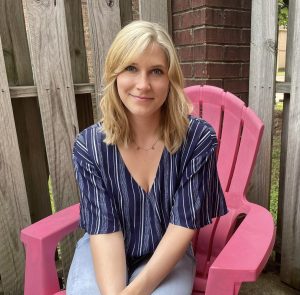
Photographer courtesy: Robert Jordan.
In a field where male dominance has long been the norm, three women are leading the curatorial charge in Oxford’s museums.
Melanie Antonelli and Rosa Salas Gonzalez serve as curator and curator of education, respectively, of the University Museum. Rachel Hudson is assistant curator of Rowan Oak.
Though men historically dominate the museum field, Antonelli and Gonzalez further a lineage of female museum frontrunners in Oxford. Kate Skipwith founded the University Museum (originally the Mary Buie Museum), and the museum has had several female curators and directors in its 84-year history.
Antonelli was named curator in 2018, but being a curator was not her initial aim.
“I took an alternative, though not uncommon, route to curation by starting out as an artist,” Antonelli said.
After Antonelli earned a BFA in Illustrations from Ringling College of Art and Design, she earned a MFA in Studio Art from the University of Mississippi.
While earning her master’s degree, Antontelli began working at the University Museum, where she received broad professional training in museum operations. Since 2013, she has held various roles at the museum.
Although she also serves as registrar and collections manager, being curator is Antonelli’s favorite aspect of her multifaceted job.
“My role as curator is the most rewarding because it allows me to be both creative and analytical,” Antonelli said.
She cited last year’s Jacob Hashimoto exhibition and the reinstallation of the museum’s collection of Greek and Roman antiquities as two of her proudest projects.
Like Antonelli, Gonzalez was an artist before becoming a museum professional. While earning a BFA in Ceramics from the University of Mississippi, the Venezuela native worked as an education intern at the University Museum. That experience prompted her to pursue a master’s degree in teaching from UM’s Teacher Corps, which she completed in 2022.
Shortly after, she joined the museum as its curator of education.
Gonzalez’s job combines education with art creation and public outreach.
“A curator of education has the very special role of creating educational opportunities for our audiences that are free of bias, easily accessible and fun,” she said.

Each week, the University Museum hosts several such programs for a variety of age groups.
Hudson’s curatorial career began after her undergraduate years at the university. After graduating with an English degree in 2017, she worked part-time in visitor services at Rowan Oak and was hired as assistant curator in 2021. Hudson is only the second woman to occupy a curatorial role at Rowan Oak.
“Apart from myself and Cynthia Shearer, who served as curator from 1994-1999, there haven’t been any other women curators of Rowan Oak,” Hudson said.
Despite few women taking on the official title, Hudson cited the informal curatorial work of UM students.
“Many women graduate students have worked at Rowan Oak over the years and have helped with exhibits, maintenance and visitor services – most everything it takes to be a curator,” she said.
Hudson also noted the challenges of being a woman in a curatorial role.
“To make a long answer short, it can be challenging. I’m also relatively young compared to most in the museum and historic sites field, so sometimes my authority or knowledge is questioned,” Hudson said.
Antonelli echoed her remarks.
“On a micro level, there are challenges daily with being viewed as someone with authority and knowledge – challenges that my male counterparts may not face,” she said.
Hudson and Antonelli’s experiences point toward a truth about museum employment at a broader scale. The general workforce of museums has recently achieved balance among genders, and smaller museums, such as the University Museum, are often entirely staffed by women.
Despite this, the prevalence of women in museums does not necessarily put an end to gender inequities. Issues like gender bias and wage inequality still plague the field.
“On a macro level, I have experienced firsthand and seen other female curators not advance professionally as quickly, receive recognition or be compensated equally,” Antonelli said. “And although there may be growth in hiring POC (people of color) and women, it is often not in the leadership roles.”
Gonzalez said that gender discrimination affects the work displayed. She noted the lack of female artists featured in museums.
“I think it’d be foolish to ignore the issues surrounding gender in the museum field, especially when it comes to female representation in museum galleries,” she said.
Only 13 percent of featured artists in major U.S. museums are women.
Gonzales said the University Museum challenges this convention.
“Our exhibits highlight and honor so many women artists like Theora Hamblett (a Mississippi painter) and Clementine Hunter (a Louisiana folk artist),” Gonzales said.
Hamblett’s work takes a front seat at the museum, as seen in the recently installed “Friends of Theora” exhibition.
Gonzales talked about how the abundance of women employed by the university’s museum and historic houses fosters a community.
“Working at our museum, I have found powerful female colleagues and students that inspire and push me everyday,” Gonzalez said. “Feeling represented amongst your team creates an environment where you feel more comfortable, understood and seen.”
Antonelli emphasized the impact of employing women in high-level museum roles.
“Our representation allows young girls and student women to see a career in the museum field as an option and that will help create equity,” she said.


























